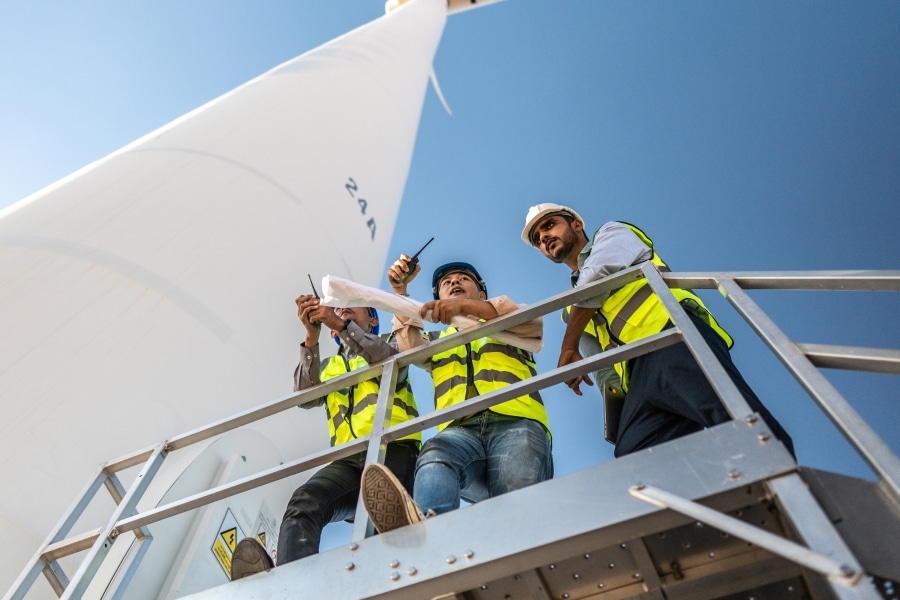Illustration by Rae Scarfó
Reentry internships, or “returnships,” began at financial services firms in the early 2000s as an answer to a longtime problem that’s also facing the architecture, engineering and construction (AEC) industry: Women were starting their careers in the sector, but leaving before working their way up to become leaders.
These paid internships, usually with benefits, were designed for women who had left the workforce, often to care for children or aging parents. As part of the program, they work alongside the company’s employees, build on their skills and network with other so-called returners.
Now the concept is spreading to other fields, including technical ones. In 2015, the Society of Women Engineers partnered with iRelaunch, which helps companies start return-to-work programs, and launched the STEM Reentry Task Force to get engineers who stepped away from the field back to work.
Today, about 30 companies—including Caterpillar, CDM Smith and Cummins—offer return-to-work programs for people who typically haven’t been working in their field for a couple of years. Although a job gap of two years or more often draws a side-eye from recruiters, of the 600 returners who went through task force-affiliated reentry programs between 2015 and 2019, 86% now are working full time.
Jennifer Abman Scott, vice president of strategic partnerships and co-director of the STEM Reentry Task Force for the Society of Women Engineers, said the hiring rate underscores the untapped talent pool of people who are ready to get back to work. Most returners are women, but some are men.
“I always say once an engineer, you’re always an engineer,” Scott said. “It’s not like you forget how to be an engineer. It’s drilled into you.”
Male-dominated fields
Despite efforts to get more women excited about careers in architecture, engineering and construction, the fields remain largely male-dominated.
Women comprise just 17% of registered architects, according to the American Institute of Architects. They account for only 13% of engineers in the workforce, according to the Society of Women Engineers. And they made up 9% of the American construction workforce in 2018, according to the National Association of Women in Construction.
There are leaks in the pipeline all along the way, starting with getting girls interested in STEM careers, Scott said. But, for those women who find a way in, the hurdles continue.
[SEE ALSO: Meet Deb Poteet, the Woman Behind One of Montana’s Essential Construction Firms]
They may be the only woman on their team. There may be no female leaders to aspire to in the company. And their employer may not have the benefits, such as a flexible maternity leave policy, that allow them to juggle work and home more easily. So, they leave.
The number of displaced female workers has spiked during the COVID-19 pandemic. According to a Rand Corporation report, 2.2 million fewer women were working in September 2020 than a year earlier. Some are forced to leave because of a job loss, but others are calling it quits to care for kids when schools and childcare centers are closed.
‘Talent pipeline strategy’
Going forward, as architecture, engineering and construction companies seek ways to fill the ever-present gender gap and make up for the lost female workers during the pandemic, building a more diverse pool of employees and leaders will require creativity. That’s where a reentry program comes in.
“For the companies that run them, they’ve turned into a talent pipeline strategy to be continuously connected with this high-caliber pool,” said Carol Fishman Cohen, co-founder of iRelaunch.
Return-to-work programs typically run between 12 weeks and six months and are designed for people who have been out of the field for at least two years. Returners are paid and sometimes receive health care and other benefits. The intention is that the returner will be hired at the program’s conclusion.
Some run as internship-like programs; others are direct-hire programs. Some companies bring on returners one at a time, finding candidates on iRelaunch’s job board. Most programs include training and support where returners can work on their skills and develop a network of other returners.
Cohen and Scott shared a few tips for building a successful return-to-work program while refuting some common objections.
Find a champion and start small
Get an executive champion who will run interference when barriers pop up, Cohen recommends. And start small. “Small enough to control all the parameters that you can,” she said. “After a few success stories, more managers will get involved and the program can expand.”
Look for constant learners
The best candidates are people who have been staying current in their skills, doing relevant volunteer work, taking courses or setting up an online portfolio to showcase their work. “It’s not so important to me that the person be up on every new tool,” Cohen said. “But I want to see an individual that is fearless about learning what they don’t know.”
Shift your mindset on skills
Some managers and recruiters worry that a returner may not have the current technical skills for the job. Scott recommends a mindset shift.
“Aren’t you updating your current employees’ skills already?” she said. “There are hundreds of folks out there who would add to your diversity and inclusion efforts, and they already have the work experience. You’re not training them how to work in teams, how to manage, how to negotiate. They know that. But they might need a refresh on the tech that a specific organization is using, and many organizations offer that already.”
Don’t worry that they’ll leave
Another common fear is that a returner will just leave the workforce again. But Scott said that’s unlikely. “They’ve already taken their break,” Scott said. “They’re done. They’re probably the most stable of everyone.”
Sell it as a recruitment and retention strategy
Return-to-work programs offer a way for companies to diversify their workforces, particularly with women in middle and senior leadership who might have been overlooked in the past. But they also are a strong statement to younger employees who may be considering a career break of their own someday. A survey by international staffing firm ManpowerGroup found that 84% of millennials plan on stepping away from their career to care for kids, volunteer, pursue a life dream or travel, among other reasons.
For those considering a career pause, reentry programs send the message that “you, too, can come back,” Scott said. “We’ve heard from younger employees who say that it makes them really proud to work there.”












